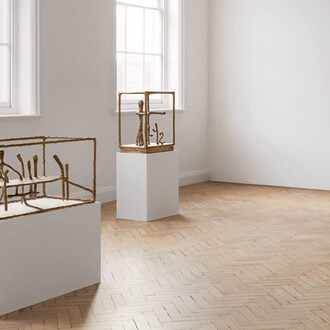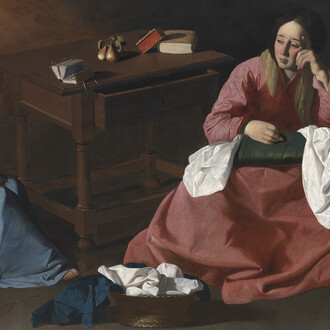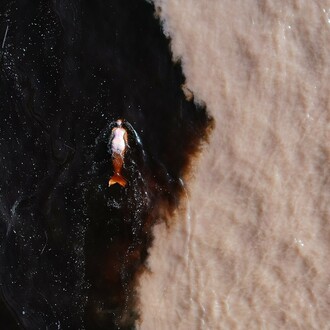Over the past two decades, Nacho Carbonell has developed a distinctive artistic language characterised by his tactile sculptures that treat objects as living organisms, most notably his renowned Cocoon series. This new body of work exhibited in Escaping forward at the Carpenters Workshop Gallery in London marks a transformative moment for the revered Spanish artist. Presenting an exploration into themes of memory, texture and materiality, the collection demonstrates the next phase of Carbonell’s career. “This is a new beginning,” says the artist. “I’m trying to escape forward”.
In this exhibition of over 30 works, Carbonell uses a collage-like approach, integrating remnants and leftover materials from previous projects in his studio to forge new, vibrant artworks. A standout piece that illustrates this technique is The roots mural, a three-dimensional mural that elicits the tones and textures of a landscape, a motif that has been central to his work for the past twenty years. Using a process of rediscovery, this methodology reflects a broader metaphor for his creative journey, where gaps, overlaps and gradients signify the state of flux within his practice.
A la mesa* features a sandy-coloured table with a mesh bottom and a stone top, reminiscent of Carbonell’s childhood memories of diving and finding fishing nets entangled in rocks. This piece, like many others in the collection, evokes a sense of nostalgia and the uncovering of his own personal history. Two wall-mounted sculptures Mesh mushroom doors and Mesh mushroom selve are crafted with interactive doors that invite viewers to discover hidden elements within. These works emphasise the notion of fossils and the passage of time, casting the objects as relics that hold secrets waiting to be uncovered.
The exhibition also displays a series of cabinets and room dividers, each designed to interact with the viewer. Dune cabinet features an exterior made of bark that conceals a smooth, intricate interior with a tree branch growing inside. Another piece, Corteza cabinet, initially inspired by a desert landscape, evolved into a topographic exploration that nods to ancient caves carved into stone.
Ceramic standing lamp is a light sculpture characterised by vibrant greens and yellows, combining thick ceramics and metal pieces. This work encapsulates Carbonell’s experimental approach to materials, blending different textures and forms to create a cohesive yet dynamic whole. The use of clay in this sculpture, a material typically absent from his work, brings forth an earthy, bendy and sensual aesthetic to the composition. The use of this material also reveals the experimental direction in which Carbonell’s artistic process is heading.
Carbonell’s continued fascination with the notion of living organisms is evident throughout the exhibition. His sculptures often resemble hybrid forms, merging organic and mineral elements to create pieces that appear both alive and fossilised. This duality is particularly apparent in the Table lamp series of honeycomb-textured mesh sculptures. Similar to his previous Cocoon series, where mesh and organicity intermingle, these pieces combine wood and metal, juxtaposed to highlight the relationship between natural and man-made materials.
Carbonell’s new body of work is a celebration of both the triumphs and the mistakes inherent in the creative process. Each piece illustrates his belief that every moment, whether good or bad, contributes to the evolution of his art. This exhibition invites viewers to engage with his sculptures on a tactile and sensory level, exploring notions of history, memory and material that are embedded into each layer.
I’ve been going through changes over the years, my work is now slower and more mature. This escape forward is showing this maturity, while staying loyal to my roots and my work. I’m using every resource around me, the materials, ideas, knowledge and naiveness.
(Nacho Carbonell)
















